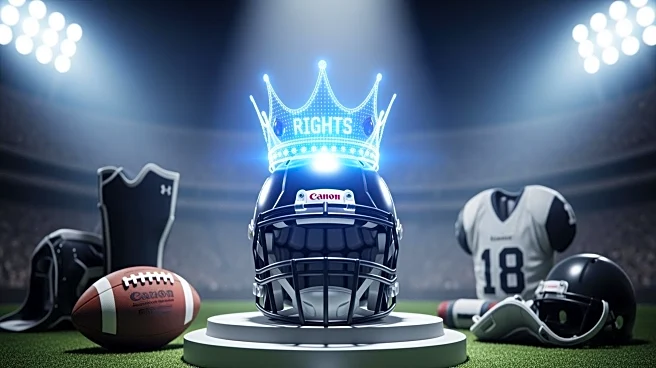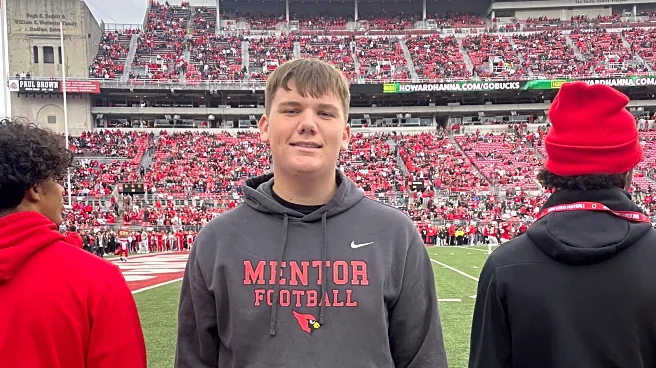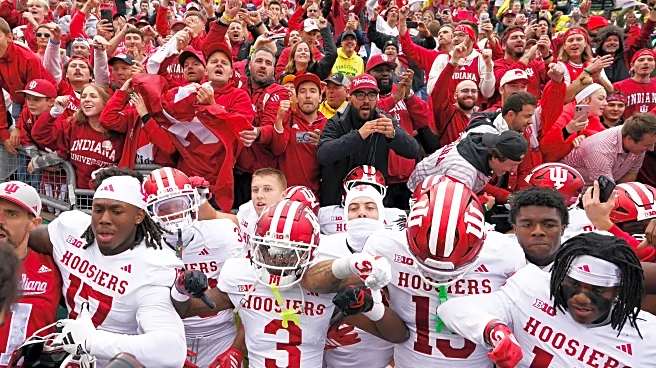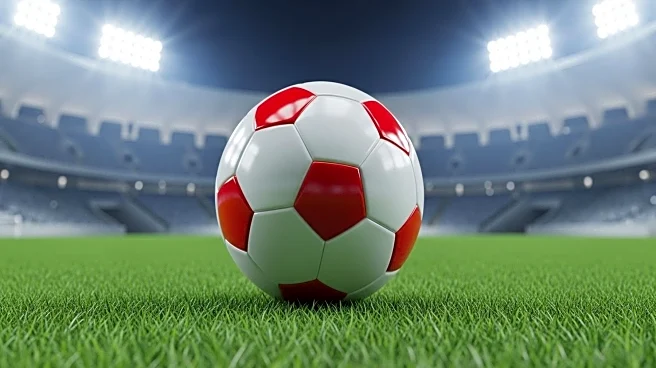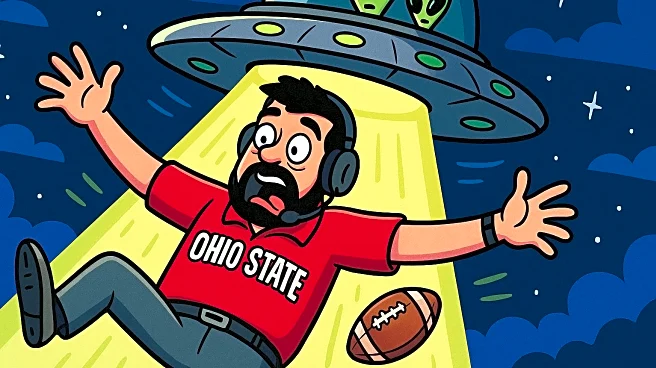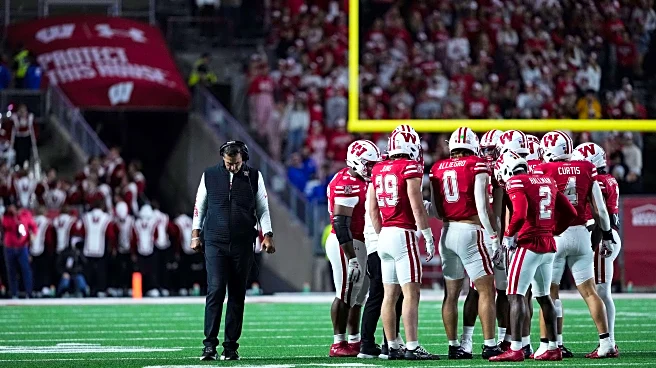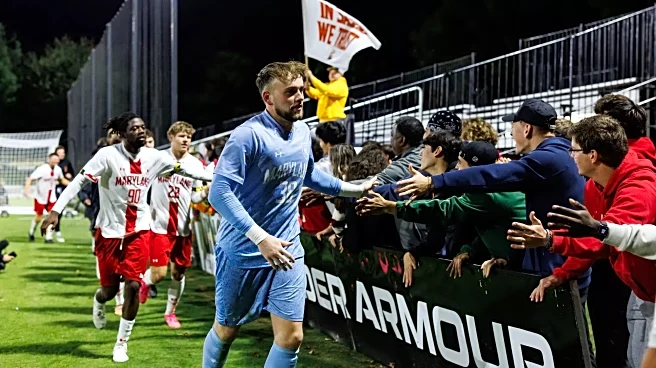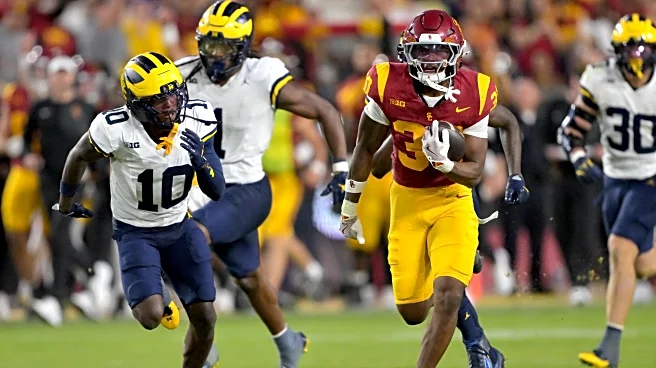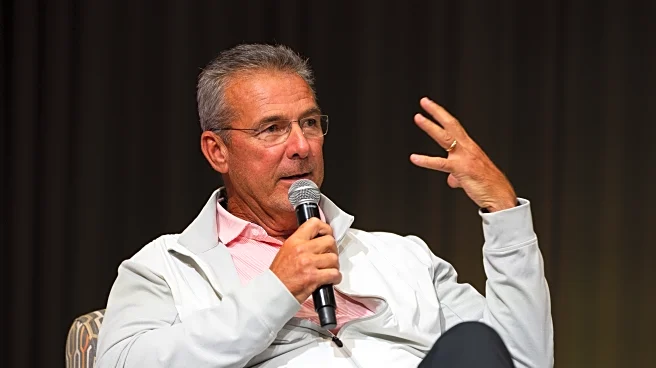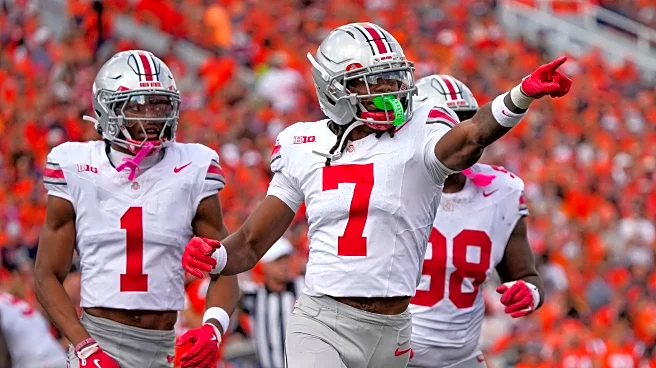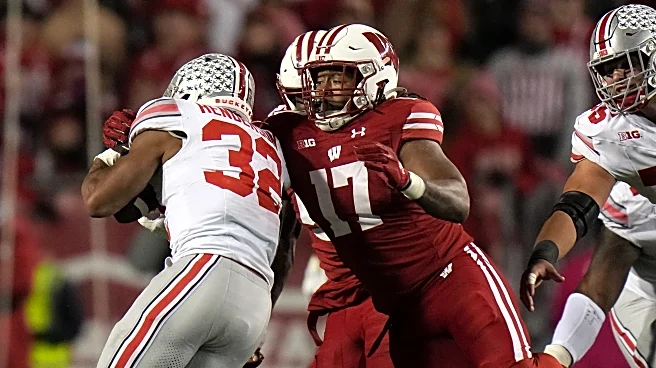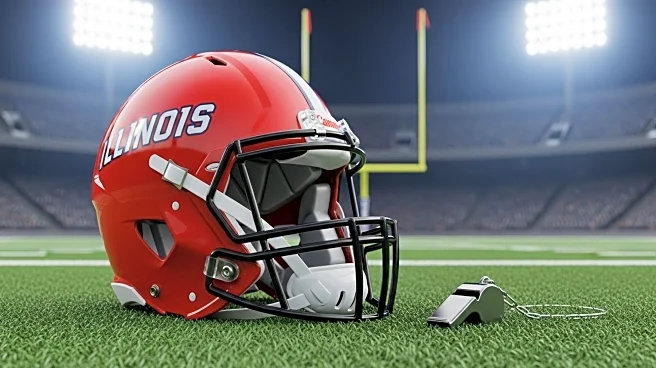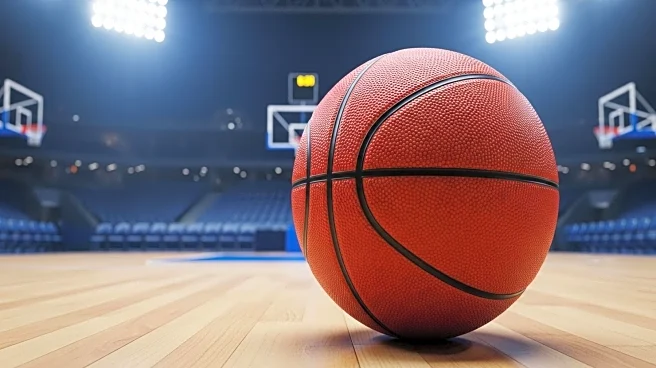What's Happening?
Jamier Brown, a top high school wide receiver in the class of 2027, is at the center of a lawsuit filed in Ohio seeking to allow high school athletes to profit from their name, image, and likeness (NIL). The lawsuit, filed in Franklin County, challenges
the Ohio High School Athletic Association's (OHSAA) current prohibition on NIL earnings for student-athletes. Brown, committed to Ohio State, has potential earning power exceeding $100,000 annually, according to the complaint filed by his mother, Jasmine Brown. The lawsuit argues that the OHSAA's ban unfairly restricts economic opportunities and freedom of expression for Ohio's high school athletes. Brown's case highlights the disparity between Ohio and other states that permit high school athletes to benefit from NIL deals.
Why It's Important?
The lawsuit could have significant implications for high school sports in Ohio and potentially set a precedent for other states with similar restrictions. Allowing high school athletes to profit from NIL could provide financial relief and opportunities for student-athletes, enabling them to cover expenses related to their athletic and academic development. This change could also impact recruitment dynamics, as athletes might choose to stay in states that offer NIL benefits rather than relocating to states with more favorable policies. The case underscores the growing importance of NIL rights in sports and the need for updated regulations that reflect the evolving landscape of amateur athletics.
What's Next?
The OHSAA is preparing for an emergency vote among its member schools to address the lawsuit's challenge to its NIL policy. This vote could lead to a change in the rules governing high school athletes' ability to profit from their NIL. The outcome of the lawsuit and subsequent vote could influence similar legal actions in other states, prompting a nationwide reevaluation of high school sports regulations. Stakeholders, including schools, athletes, and legal experts, will be closely monitoring the developments and potential shifts in policy.
Beyond the Headlines
The lawsuit raises broader questions about the balance between amateurism and commercialization in high school sports. It challenges traditional views on student-athlete compensation and could lead to a cultural shift in how young athletes are perceived and supported. The case also highlights the legal and ethical considerations of NIL rights, as families and athletes navigate the complexities of monetizing personal brands while maintaining academic and athletic commitments.
